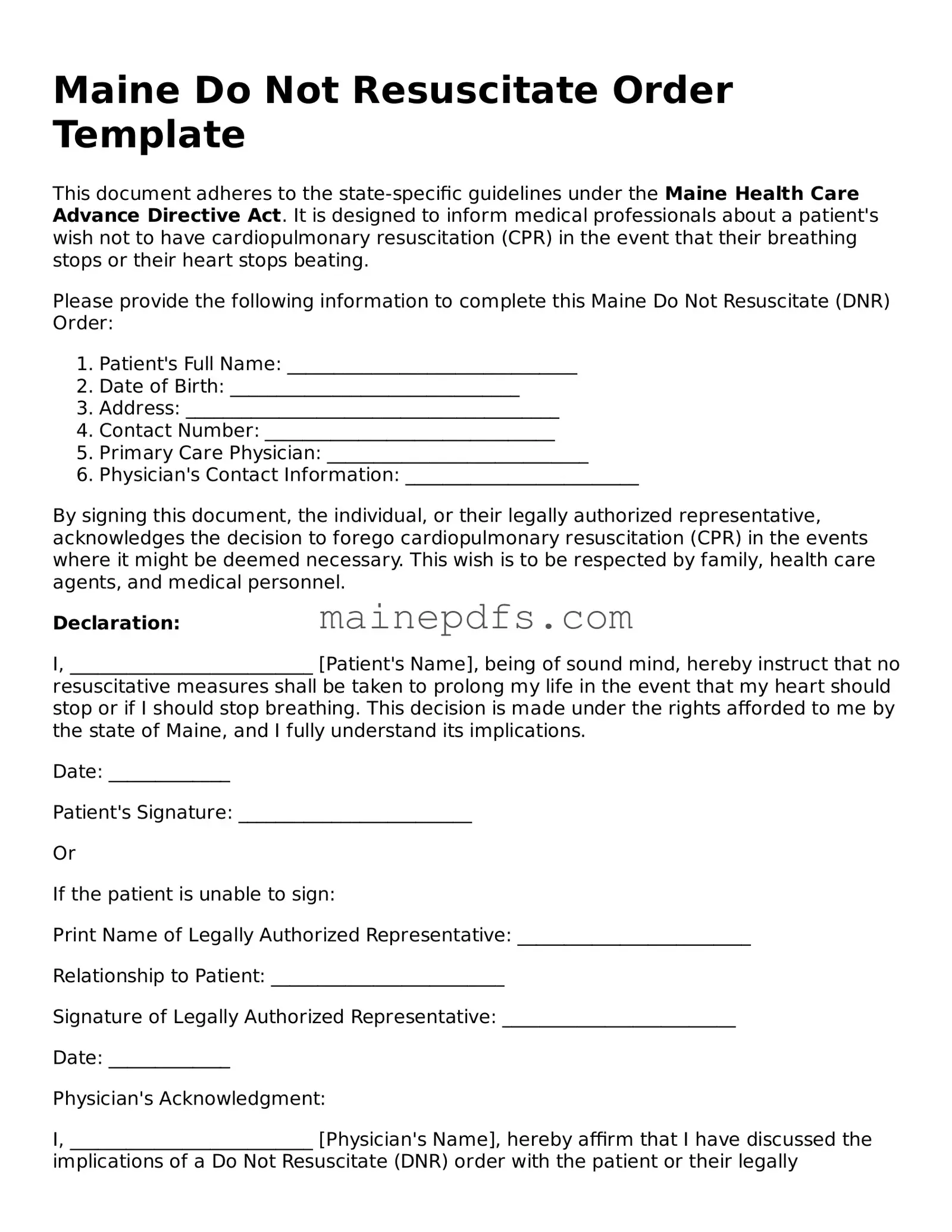Maine Do Not Resuscitate Order Template
This document adheres to the state-specific guidelines under the Maine Health Care Advance Directive Act. It is designed to inform medical professionals about a patient's wish not to have cardiopulmonary resuscitation (CPR) in the event that their breathing stops or their heart stops beating.
Please provide the following information to complete this Maine Do Not Resuscitate (DNR) Order:
- Patient's Full Name: _______________________________
- Date of Birth: _______________________________
- Address: ________________________________________
- Contact Number: _______________________________
- Primary Care Physician: ____________________________
- Physician's Contact Information: _________________________
By signing this document, the individual, or their legally authorized representative, acknowledges the decision to forego cardiopulmonary resuscitation (CPR) in the events where it might be deemed necessary. This wish is to be respected by family, health care agents, and medical personnel.
Declaration:
I, __________________________ [Patient's Name], being of sound mind, hereby instruct that no resuscitative measures shall be taken to prolong my life in the event that my heart should stop or if I should stop breathing. This decision is made under the rights afforded to me by the state of Maine, and I fully understand its implications.
Date: _____________
Patient's Signature: _________________________
Or
If the patient is unable to sign:
Print Name of Legally Authorized Representative: _________________________
Relationship to Patient: _________________________
Signature of Legally Authorized Representative: _________________________
Date: _____________
Physician's Acknowledgment:
I, __________________________ [Physician's Name], hereby affirm that I have discussed the implications of a Do Not Resuscitate (DNR) order with the patient or their legally authorized representative. I ascertain that the patient or their legally authorized representative understands the nature and scope of a DNR order.
Date: _____________
Physician's Signature: _________________________
This document is effective immediately and will remain in effect until revoked. The patient or their legally authorized representative has the right to revoke this order at any time.
Note: This document should be kept in a location where it can be easily accessed by emergency medical personnel or family members.
